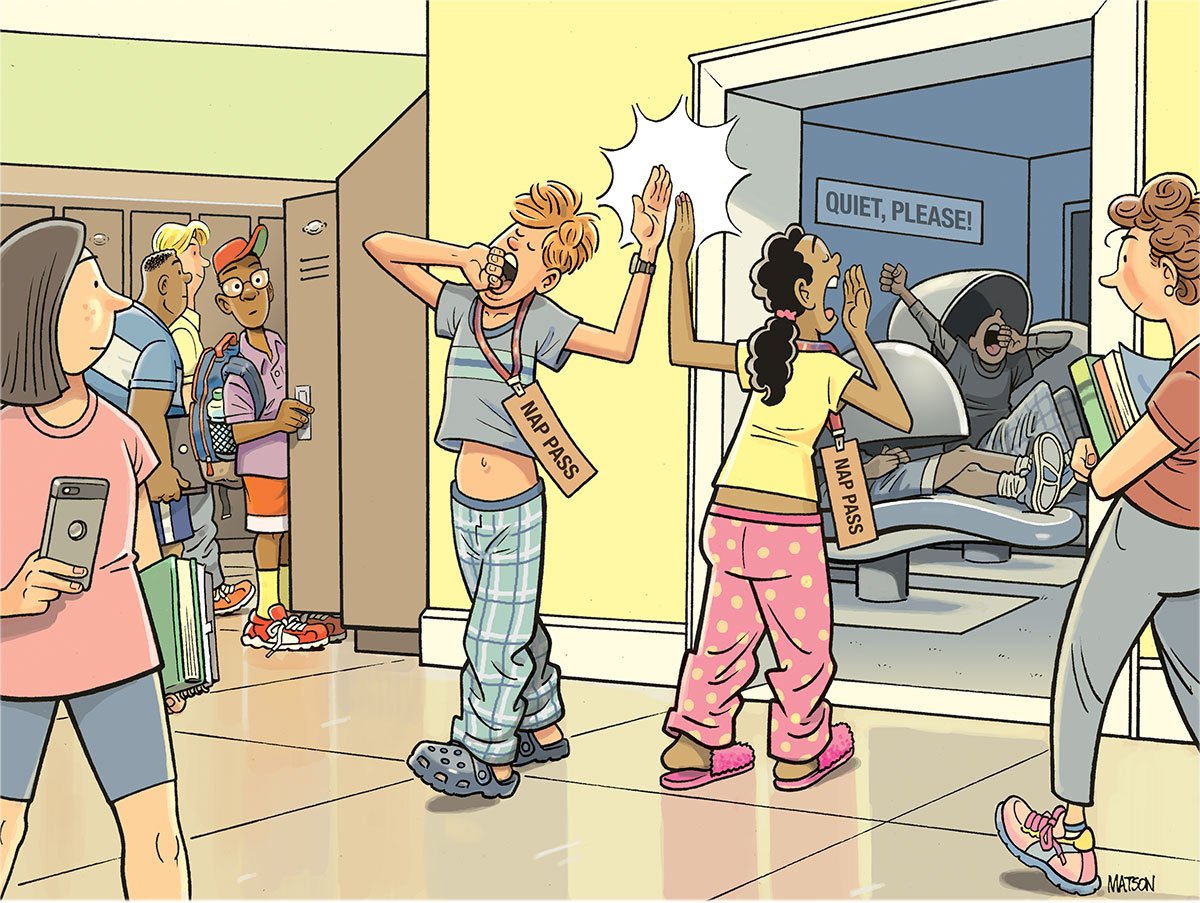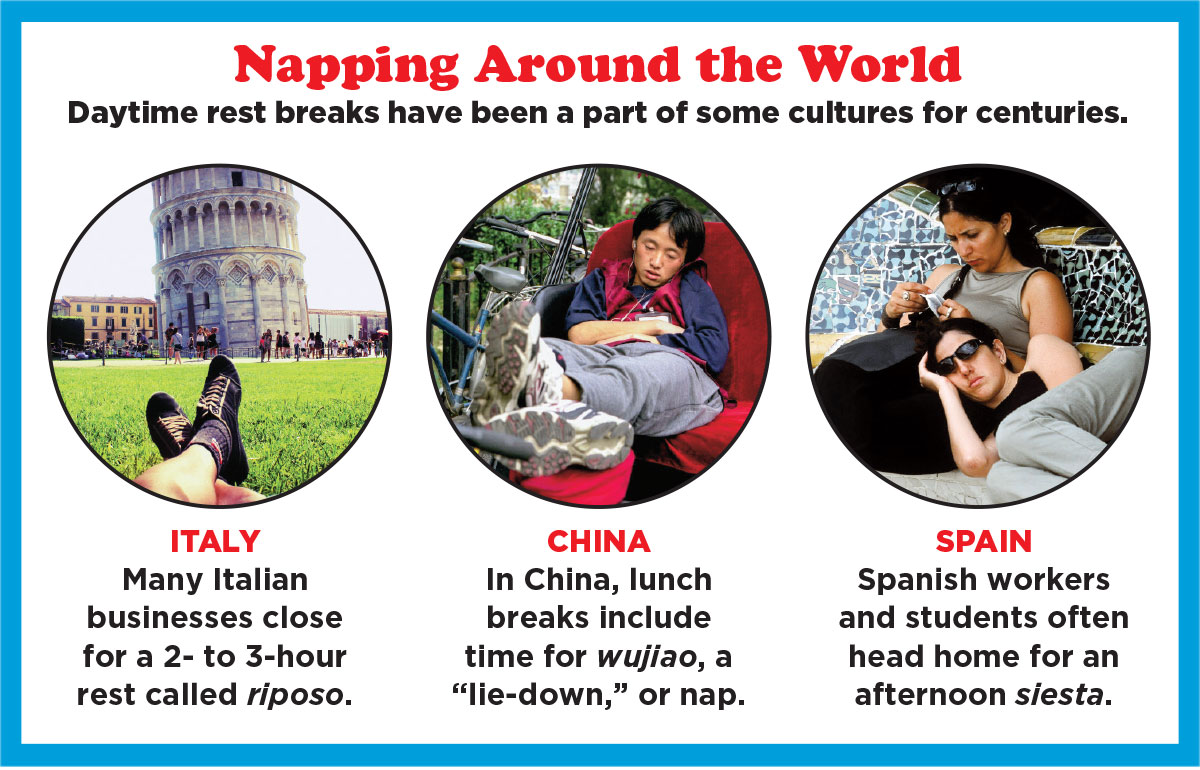It’s happening all over America, probably right this minute wherever you live: Countless people are stumbling through the day, eyes glazed over and their minds losing focus.
No, it’s not the zombie apocalypse. It’s just sleep-deprived students struggling to make it through another school day.
Experts say teens need 9 to 10 hours of sleep a night. Yet most fall far short. About 60 percent of middle schoolers and 70 percent of high schoolers get less than 8 hours of sleep on school nights, according to the Centers for Disease Control and Prevention. That’s a major problem because weary minds have a hard time learning new information—exactly what’s required of students.
Now some schools are trying to address the sleep-shortage problem by letting teens nap during the school day. In Las Cruces, New Mexico, for instance, some high schools have added nap pods—recliners with hoods that can be pulled down over a student’s head to block out light and other distractions. At those schools, teens can request to leave class and go rest for 20 minutes.
There’s no question that the average American teen doesn’t get enough sleep, but is allowing kids to nap in school really the answer?








